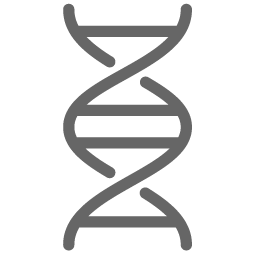BCS or mastectomy – Patients with gene mutation
In patients with breast cancer with a confirmed germline mutation (e.g. BRCA1/2), that predisposes to an increased risk of breast cancer discuss the options of breast-conserving surgery, mastectomy or bilateral mastectomy, noting that there is a higher risk of a second malignancy if the breast is conserved, but that this risk is reduced by adjuvant systemic therapy.
Inform women diagnosed with breast cancer with a BRCA1/2 mutation that there is an increased risk of ipsilateral breast cancer after breast conserving treatment compared to mastectomy, but this is reduced by adjuvant chemotherapy
Surgical management, with or without radiotherapy, on the ipsilateral side for women diagnosed with breast cancer with a BRCA1/2 mutation: Offer a choice of either breast conserving treatment (breast conserving surgery and radiotherapy) or mastectomy to women diagnosed with breast cancer with a BRCA1/2 mutation as both are effective in terms of survival
Body of evidence provides some support for recommendation(s), but care should be taken in its application
How this guidance was developed
This recommendation was adapted from two recommendations in the CA 2014 guidelines (Australia). Each source recommendation was based on a systematic review of the evidence conducted to April 2012 and each was graded 'C' (using NHMRC methods) by the source guideline authors. The source recommendations were adapted by merging them, by expanding the patient population from ‘women with germline mutations’ to ‘patients with germline mutations’, by including ‘bilateral mastectomy’ and removing reference to ipsilateral risk, and by replacing ‘inform’ with ‘discuss’. The importance of distinguishing between ipsilateral and contralateral risk, and age of the patient (for example the higher risk of contralateral breast cancer in younger women with breast cancer) in considering the various options should be noted.
BCS or mastectomy – Patients with gene mutation
In patients with breast cancer with a confirmed germline mutation (e.g. BRCA1/2), that predisposes to an increased risk of breast cancer discuss the options of breast-conserving surgery, mastectomy or bilateral mastectomy, noting that there is a higher risk of a second malignancy if the breast is conserved, but that this risk is reduced by adjuvant systemic therapy.
This recommendation was adapted from two recommendations in the CA 2014 guidelines (Australia). Each source recommendation was based on a systematic review of the evidence conducted to April 2012 and each was graded 'C' (using NHMRC methods) by the source guideline authors. The source recommendations were adapted by merging them, by expanding the patient population from ‘women with germline mutations’ to ‘patients with germline mutations’, by including ‘bilateral mastectomy’ and removing reference to ipsilateral risk, and by replacing ‘inform’ with ‘discuss’. The importance of distinguishing between ipsilateral and contralateral risk, and age of the patient (for example the higher risk of contralateral breast cancer in younger women with breast cancer) in considering the various options should be noted.


